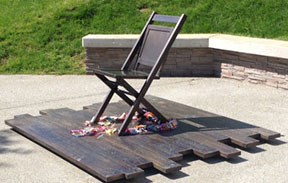Franklin D. Roosevelt and the Japanese ExclusionAs tensions between the United States and Japan grew, Roosevelt began seeking information on Japanese Americans from government intelligence agencies, along with individuals, hired by FDR to uncover Japanese American activities. However, both the government and individual findings concluded that there was no legitimate threat posed by Japanese Americans living on the West Coast. However, after the attack on Pearl Harbor, the President, misinformed by racism was pressured by politicians and military commanders to remove Japanese Americans from the west coast. Despite the debate, Roosevelt eventually gave way and signed Executive Order 9066, allowing the military to establish exclusion zones which allowed for the removal of Japanese Americans from their homes in the west.LostIn December of 1942, an elderly man named Edward Abe went missing gathering wood to make artwork and furniture. Idaho winters regularly had temperatures that dropped below freezing, and many were ill prepared for the harsh conditions they would encounter. His remains were found a few days later only two miles away from the camp. He died from exposure and exhaustion1.Minoru YasuiMinoru Yasui was one of four Japanese Americans who fought against the exclusion and removal of Japanese Americans from the West Coast. Born to fruit farmers in Oregon, Yasui had eight siblings. Throughout his young adult life, he worked vigorously to become a lawyer, and ended up becoming the first Japanese American to graduate from law school in Oregon. However, he was unable to find work as a lawyer and worked at the Consul General of Japan in Chicago2.After Pearl Harbor Yasui’s life drastically changed. He quit his consular job and returned to Oregon. In college, he was an ROTC cadet and was commissioned as a second lieutenant in the Reserves after graduating. While attempting to report for duty in Washington, he had been turned away nine times because of his Japanese ancestry3. After Executive Order 9066 was declared, travel restrictions and curfews prompted Yasui to sacrifice himself as a legal test case against the United States government4. Yasui was convicted of breaking curfew and lost his appeal to the Supreme Court, much like Fred Korematsu and Gordon Hirabayashi. He spent nine months in solitary confinement before being sent to Minidoka, from which he left for a job in Chicago5. 
Empty Chair Project The Empty Chair ProjectLearn about the memorial for the WWII Japanese American Incarcerees of Juneau, Alaska.
1Kleinkopf. Relocation Center Diary. 36. 2Lauren Kessler. Stubborn Twig. Random House. (New York: 2003). 136, 171. 3Kessler. Stubborn Twig. 174. 4Ibid. 180. 5Gil Askawa. “Minoru Yasui”. Densho. (Accessed 6 July, 2019). http://encyclopedia.densho.org/Minoru%20Yasui/ |
Last updated: September 5, 2019
